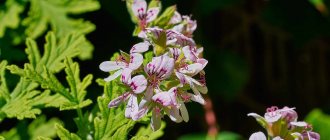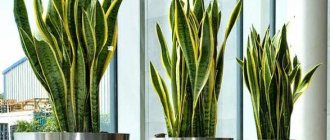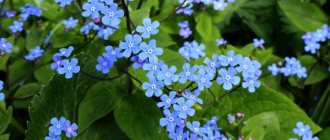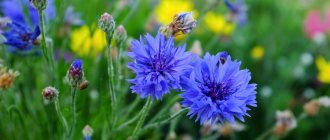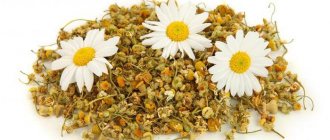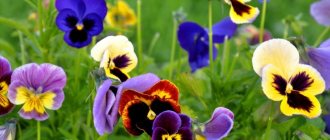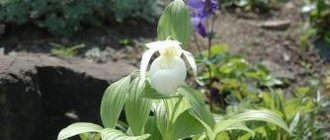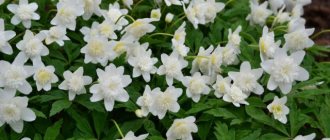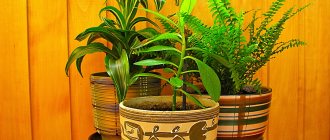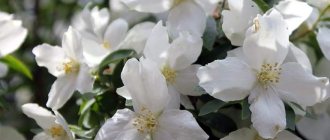Forest geranium, photo and description of the plant
In forest geraniums, the rhizome is located vertically or at a slight angle in relation to the stem. In the upper part it is thicker, with remnants of basal leaves. Ribbed, erect stems grow up to 80 cm. Small hairs cover their entire length. The basal leaves are collected in a rosette. They can be either five-partitioned or seven-partitioned. The length of their petioles is about 30 cm. The size of the middle stem leaves is smaller. They are five-parted, the petioles are much shorter. The upper leaves of geranium are opposite, most often tripartite, almost sessile.
You can see what forest geranium looks like in the photo. Geranium flowers are relatively large, purple or violet in color, arranged two on one peduncle. The inflorescence is a multi-flowered dichasia. The plant blooms in June. The first fruits begin to ripen in early August. Their shape resembles a bird's beak.
Forest geranium can be found in coniferous and mixed forests, next to shrubs. The plant prefers fertile, humus-rich soils.
Popular varieties of this flower family
Album
Bush, 50 cm high and approximately 35 cm wide. The flowers are white, small in diameter (20-30 mm). They bloom twice - in May and August. It is recommended to plant this variety in partial shade, as it is evolutionarily accustomed to these conditions. What can we say if it endures the harshest winters with temperatures dropping to -30 degrees below zero!
Amy Doncaster
The height of the bush reaches 50 cm, width 35 cm. The flowers are blue with a white circle in the center, the diameter of which is approximately 30 mm. Flowering in April, May, August. Just like the previous variety, this one is not afraid of the cold.
Mayflower
The height of the bush is about 50 cm, the width is about 35 cm. The color is lilac-blue with a white center. Flowering in April, May, repeated in August. Another variety that can be classified as winter.
Meran
The height of the bush is about 50 cm, the width is about 35 cm. The flowers are purple with a white center, about 30 mm in diameter. Flowering in April-May, re-blooming in August. Location: partial shade. Recommended planting density 9 pcs/m2. Tolerates temperatures down to -29°C.
Gardeners will be interested in reading about other types and varieties of geraniums:
- Geranium is blood red in color.
- Planting and caring for perennial garden geraniums in open ground.
- Gray geranium.
- Planting and caring for geraniums is excellent.
- Varieties of garden geranium: perennial, ground cover, low growing, Black Beauty.
Forest geranium and the content of nutrients in it
The chemical composition of a plant can vary depending on the type and place of growth, not only in quantitative but also qualitative terms.
The root system of forest geranium synthesizes:
- various tannins, the content of which can reach up to 22%;
- alkaloids;
- starch;
- acids and their salts.
The above-ground part of the plant contains vitamin C, as well as sucrose, fructose, glucose, flavonoids and gallotannins and ellagitannins. Forest geranium seeds contain leukocyanides, due to which they exhibit antioxidant properties. The vegetative mass of wild geranium species accumulates various microelements - copper, manganese, nickel, zinc.
Geraniol is one of the components of geranium essential oil and is widely used in the perfume industry.
How to plant?
- Choosing a landing site. It is necessary to choose a sunny, not shaded area with nutritious fertile soil. As a rule, this is chernozem; clay soil types are not suitable for us.
- The soil for geraniums is selected with a slightly acidic or neutral composition; the content of peat and river sand in the soil will only be a plus. Humus and fertilizers will also not be superfluous.
- Geranium grows well from seeds. An abundance of varieties are offered in specialized stores. You can find both classic varieties and hybrid ones. Seeds are placed in loose soil in early April. Shoots appear in 10-15 days. At the stage of formation of 3-4 leaves, the seedlings dive. Planted in the ground in early June.
Three simple care tips
- Watering. Water should be in moderation; too much water provokes a number of diseases. In this case, it is better to underfill a little rather than overfill. It is recommended to water every other day with small portions of water.
- Lighting. Geranium should be grown in the sun or in partial shade, as it tolerates frost well. But it tolerates a complete lack of light very poorly. If necessary, artificial lighting can be used.
- Trimming. The plant should be pruned as soon as its branches become bare. You need to cut generously, leaving about 5 cm from the soil so that the crown of the plant grows thick and wide.
Medicinal properties of forest geranium
Wild geranium is harvested during the flowering period. Dry the collected plants in the shade, in the open air or under the roof, in the attic. If the grass does not hang in bunches, it must be mixed. The shelf life of dry raw materials is 2 years. The roots of some species can also be used as medicinal raw materials. They are dug in late autumn, after the upper part of the plant has died off.
Homemade pelargonium leaves are used fresh. Since this plant does not have a clear dormant period, raw materials can be collected at any time of the year.
Most types of geranium have remarkable medicinal properties. The plant contains essential oil, which is why it has such a memorable smell, but not as strong as its indoor counterpart. The most “outstanding” aroma is that of Robert’s geranium, which is popularly called “stinker”.
The above-ground part of forest geranium is mainly used as a medicinal product; rhizomes are used less frequently. Traditional healers have recommended many ways to obtain healing tinctures and decoctions, all kinds of rubs and oils. Infusions have disinfectant and antibacterial properties. With their help, they treat throat diseases - sore throat, tonsillitis, pharyngitis. The astringent properties of geranium are used to treat diseases of the gastrointestinal tract. Most often, medicinal raw materials in folk medicine are necessary for the preparation of external remedies. They are very effective in stopping bleeding in various skin lesions, cuts, abrasions, and wounds. They also reduce pain from bruises and soothe itching.
Reproduction
The most effective way to propagate geranium while maintaining its unique color and shape is cuttings. With this method, the cuttings inherit all the characteristics, maintaining the color and shade of the inflorescences, the shape of the bush and other characteristics. The best time of year for this is autumn, since in August you need to prune and get strong, high-quality cuttings.
The probability of success is not always 100%, even if all conditions are met. No need to get upset, just try again.
Application
A decoction of forest geranium is effective against salt deposition, osteochondrosis, and articular rheumatism. It will also help with diarrhea. You can prepare it in the following way: pour 1.5 teaspoons of crushed roots into a glass of cold water (250 g) and boil over low heat for 20 minutes. Take several sips throughout the day.
Geranium herb is used as an external remedy and for rinsing the throat and mouth for sore throat, skin diseases, severe hair loss, and for rapid healing of wounds and ulcers. For 0.5 liters of water you will need 2 teaspoons of raw materials. Boil for 15 minutes and then leave for 1 hour.
Sometimes, instead of a decoction, a water infusion is prepared. This is the so-called “cold method”. Two teaspoons of crushed herbs are infused in 0.5 liters of cooled boiled water for 8 hours. Use in the same way as a regular decoction.
Treatment with forest geranium is contraindicated for young children, pregnant and lactating women, people suffering from chronic gastrointestinal diseases, varicose veins and thrombophlebitis, as well as allergy sufferers.
County emblem
Forest geranium is a plant of temperate and northern latitudes of the Eurasian continent. This flower is the emblem of the county of Sheffield in the UK. On the Queen's Jubilee of Great Britain in 2002, a campaign was held to select a flower emblem in each administrative unit of the country. A survey was conducted in which citizens voted for the type of flower that, in their opinion, is characteristic of their district. Then, from the list of selected species, two were selected that took leading positions in votes. As a result, a flower symbol was chosen for each district. The results were announced on May 5, 2004 on the Plantlife website. The purpose of the action was to draw attention to the problems of protecting wildflowers.
Agrotechnics of cultivation
Take cuttings that are more than 8 cm in length. It is better to cut a little below the node.- Trim the lower leaves, leaving only a couple at the top. If the top leaves are very large, cut them in half. The fewer resources and substances a plant’s leaves require, the more it allocates for the development of the horse system.
- At this stage, you can immerse the cutting in a solution of root stimulants for a couple of minutes.
- In a container with soil, using a pencil, push a place for escape
- Place the cutting in a dark glass bowl, add a mixture of water and particles of crushed coal. Sometimes, instead of dishes, they use a plastic bag filled with water, which is tied with an elastic band on the stem to prevent the moisture from evaporating.
- When the sprout takes root, you can bury it in the soil.
And remember, in order for the plant to bring pleasure and please the eye, you must not forget about proper care, observe all the conditions necessary for growth and do not neglect careful diagnostics in order to avoid advanced diseases, because beauty and elegance more than cover the hours spent on satisfying its whims.
History of origin
Meadow geranium is found in moderately wet meadows , damp forest glades, forest edges, and grows not only in deciduous but also coniferous forests and among shrubs.
The coverage of meadow geranium habitats is quite wide: the territory of Europe, Central Asia, and Siberia.
Geranium received its name for the resemblance of the fruit to the beak of a crane , and translated from Greek means “crane”.
Meadow geranium became widespread as a medicinal and ornamental plant at the end of the 16th century.
Chemical composition and pharmacological action
The roots of the plant include:
- saponins;
- phenolcarboxylic acid;
- tannins;
- flavonoids;
- catechins;
- carotene;
- vitamin C;
- carbohydrates.
Field geranium herb contains:
- Glucose.
- Raffinosa.
- Fructose.
- Alkaloids.
- Saponins.
- Vitamins K and C.
- Carbohydrates.
- Carotene.
- Flavonoids.
- Tannins.
- Leukoanthocyanins.
- Anthocyanins.
- Minerals:
- manganese;
- iron;
- zinc;
- nickel.
Meadow geranium has numerous pharmacological properties:
astringent;- anti-inflammatory;
- disinfectant;
- antibacterial;
- wound healing;
- antitoxic;
- hemostatic;
- soothing;
- antipruritic;
- antipyretic;
- relaxing;
- painkiller.
In addition, the plant is able to dissolve salt deposits in cases of gout, rheumatism and kidney stones.
What is a crane bird?
Field geranium is a perennial herbaceous plant belonging to the Geranium family. Other names: meadow geranium, cranebird.
Field geranium has a thick rhizome and a low, erect stem that branches at the top. It can reach a height of 80 cm. The stem and leaves of field geranium are covered with small hairs with glands.
The leaves are located on long petioles. The cranebird blooms in June – September. The flowers are large, solitary, lilac-red. They sit on long stalks and have five petals. The fruits appear from August to September. The fruit is a beak-shaped structure, which, when fully ripe, is divided into smaller single-seeded fruits.
Article on the topic: White cabbage (garden) - beneficial properties, description
Contraindications
There are contraindications to the use of products based on field geranium in the following cases:
- increased blood viscosity;
- thrombosis;
- thrombophlebitis;
- senile constipation;
- intestinal atony;
- gastritis with high acidity.
Field geranium has a variety of medicinal properties. The beneficial qualities of this plant have been used in numerous traditional medicine recipes. Before using products based on meadow geranium, it is very important to familiarize yourself with the contraindications.
When treating with drugs intended for internal use, precise dosages must be observed.
Basic requirements for caring for garden geraniums
Watering is the first part of care. It should be regular, but you shouldn’t “water” the plant. It needs abundant watering only after planting itself, for rooting, and during the dry season. In principle, you just need to keep an eye on the garden geranium - if its leaves begin to droop, this indicates a lack of moisture, which means water it urgently!
Loosening and mulching are perhaps the most necessary components of care, since geranium loves light and loose soil. You can plant ground cover plants next to it - they also “loose” the soil well. If the soil fertility in the area is still low, then to prevent the soil next to the flower from turning into crust after watering, it is better to walk nearby with a flat cutter.
Geranium pruning is carried out periodically, mainly by removing yellow, dry leaves, dead shoots, and broken stems. This will both improve the health of the bush and promote growth. Pruning prolongs the flowering of the bush.
Geranium does not need fertilizing as such. When planting, peat and compost are enough for her. But if you really want to, you can use complex organomineral fertilizers, but do not overuse them. Geranium also has a negative attitude towards transplants.
Garden geraniums also have two misfortunes - bacterial rot and wilting. But if the agrotechnical process is fully followed, and care is carried out correctly and regularly, then these diseases are not terrible for the bush.
